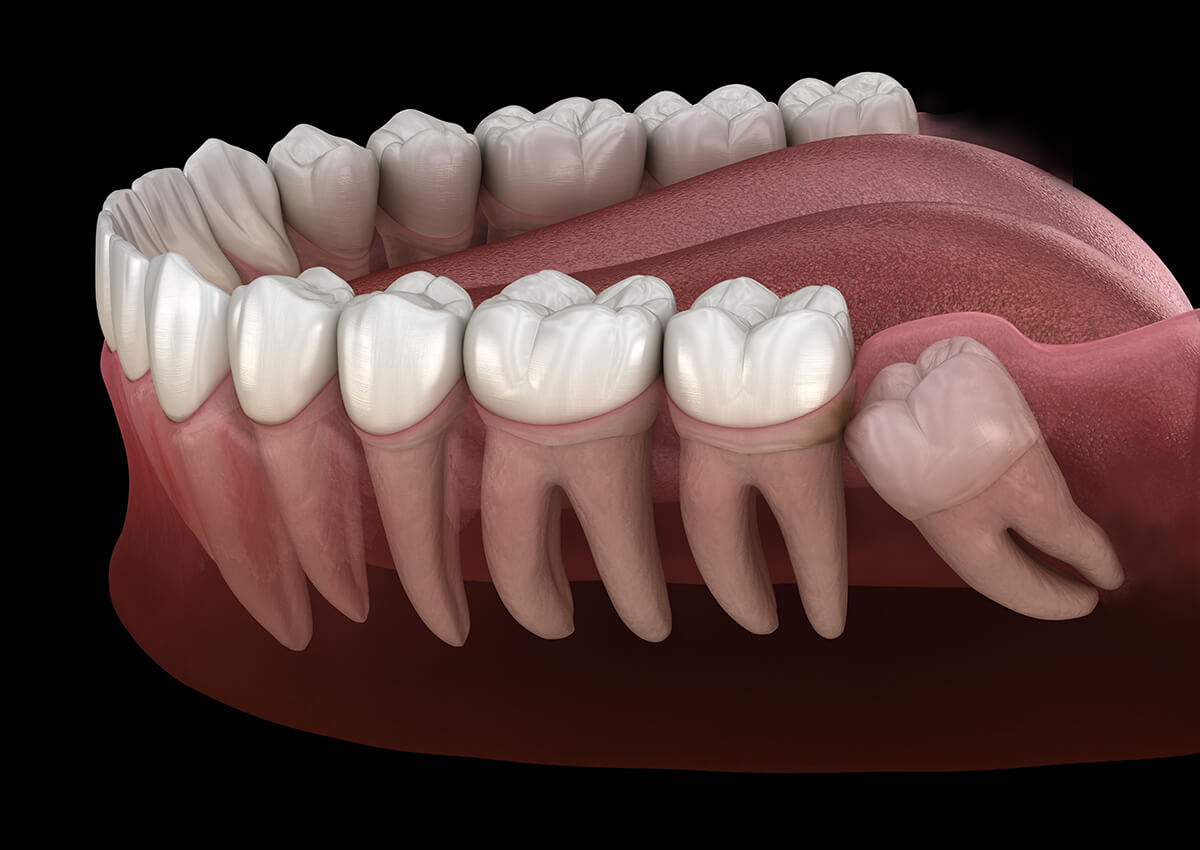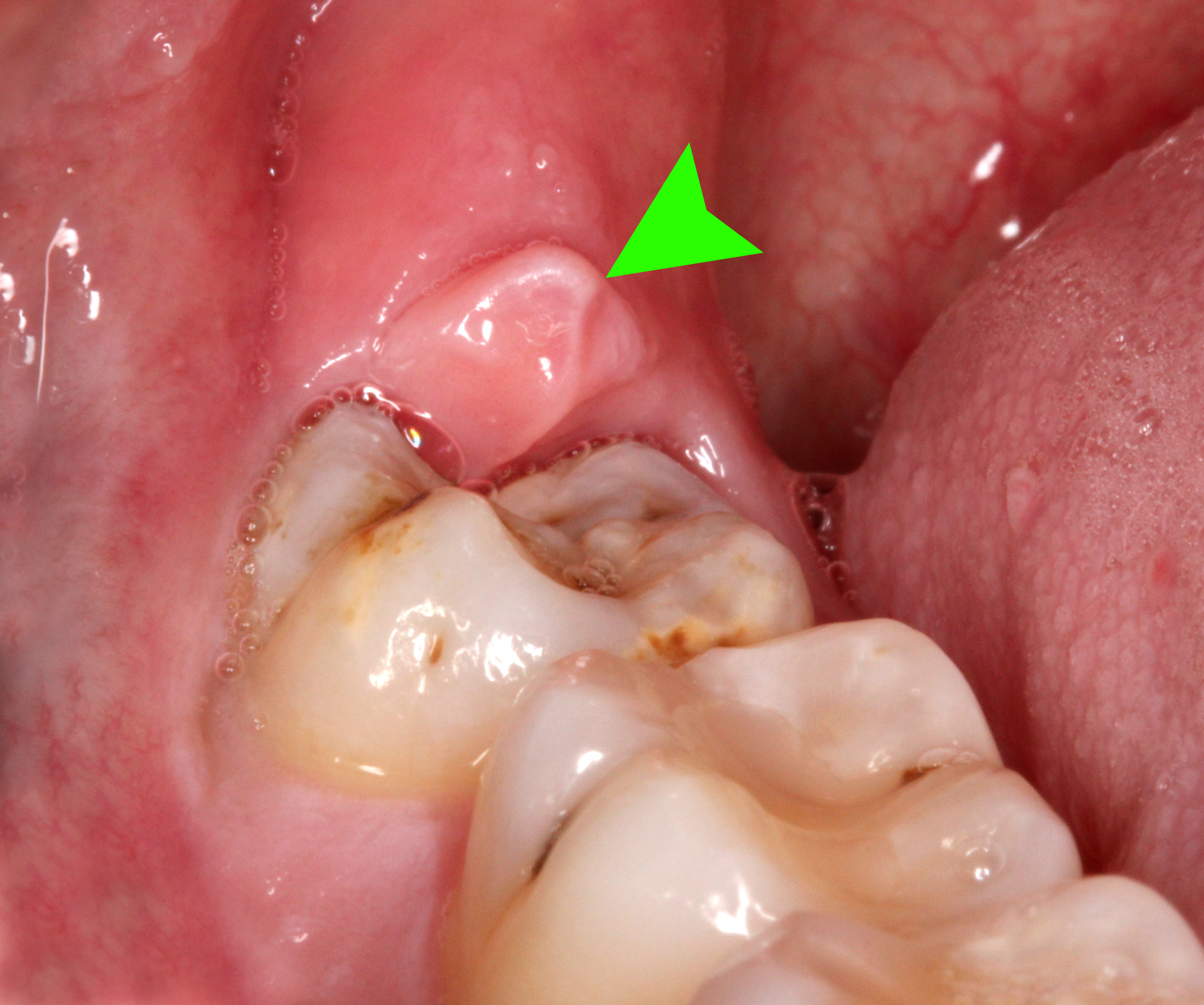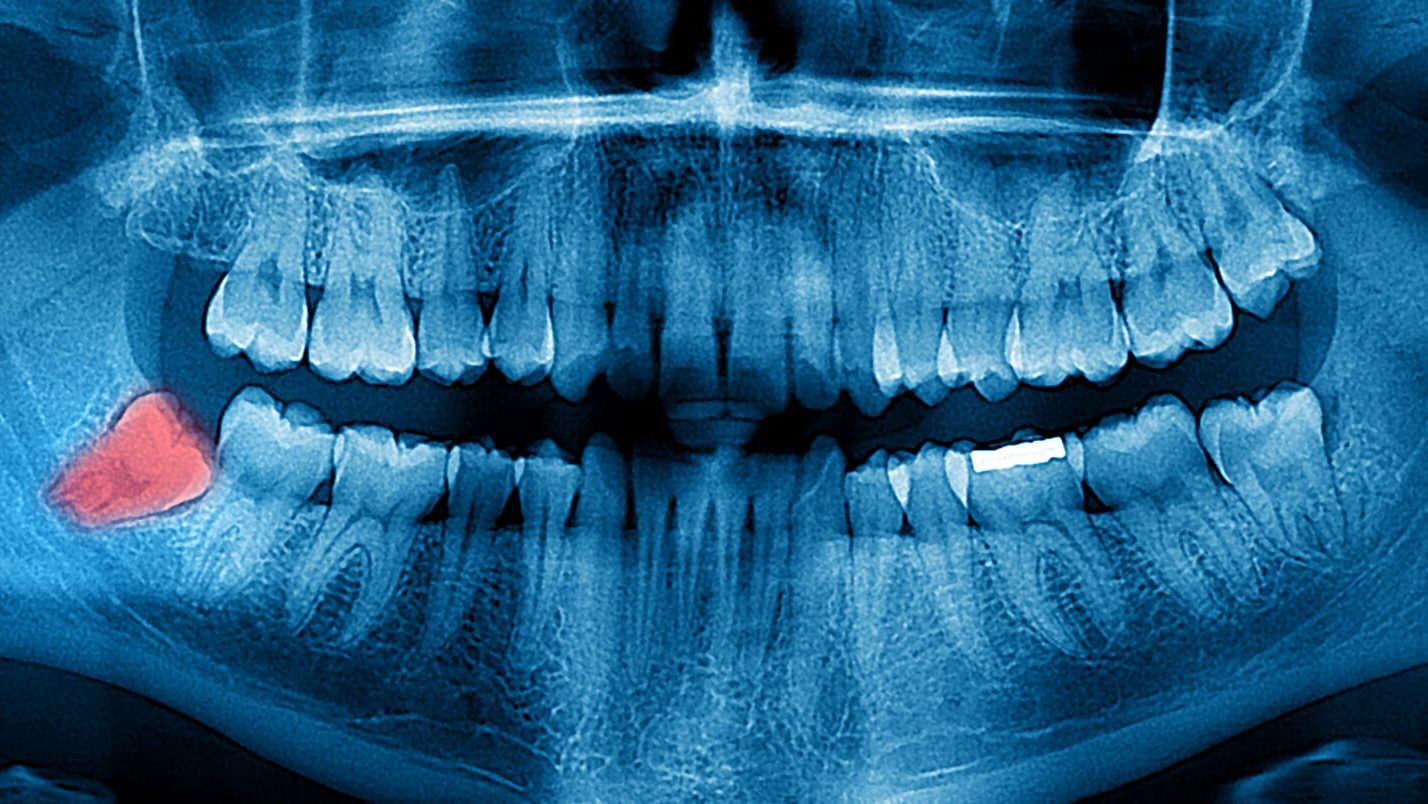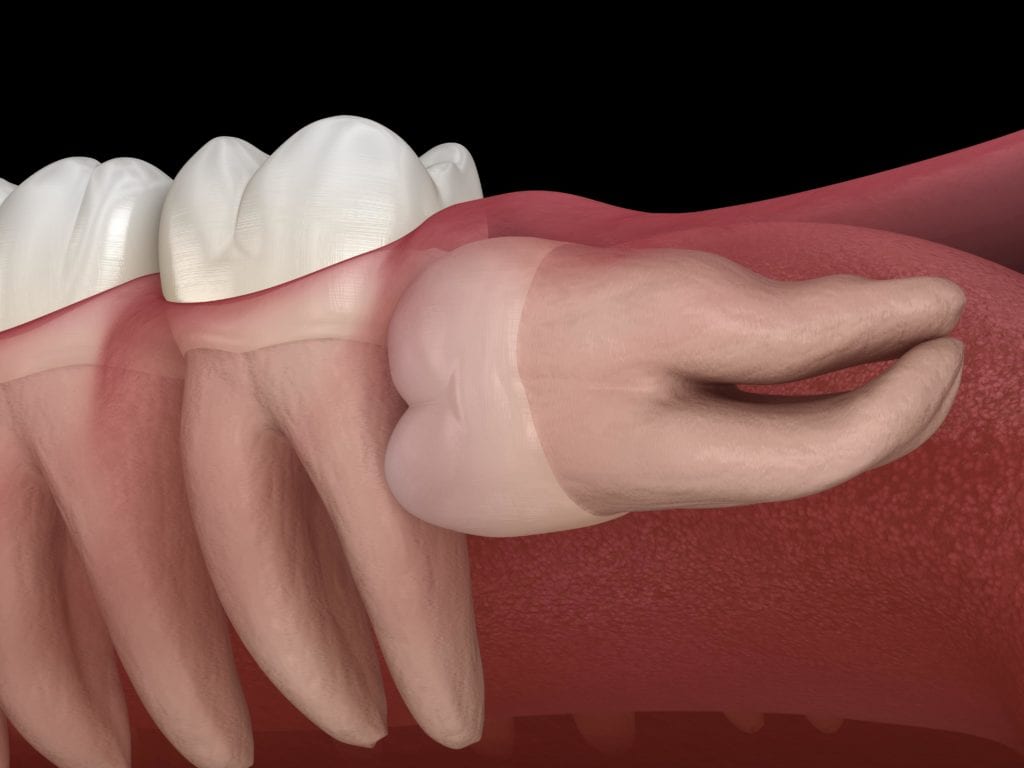






Wisdom teeth are the third set of molars in the very back of your mouth. These teeth typically come in during the late teen years or early adulthood.
If a wisdom tooth gets stuck under your gum or doesn’t have enough room to break through the gum, it’s considered “impacted.” Impacted wisdom teeth are more prone to disease, tooth decay, and other dental problems.

Impacted wisdom teeth don't always cause symptoms. However, when an impacted wisdom tooth becomes infected, damages other teeth or causes other dental problems, you may experience some of these signs or symptoms:
![]() Red or swollen gums
Red or swollen gums
![]() Tender or bleeding gums
Tender or bleeding gums
![]() Jaw pain
Jaw pain
![]() Swelling around the jaw
Swelling around the jaw
![]() Bad breath
Bad breath
![]() An unpleasant taste in your mouth
An unpleasant taste in your mouth
![]() Difficulty opening your mouth
Difficulty opening your mouth
Wisdom teeth (third molars) become impacted because they don't have enough room to come in (erupt) or develop normally.
Wisdom teeth usually emerge sometime between the ages of 17 and 25. Some people have wisdom teeth that emerge without any problems and line up with the other teeth behind the second molars. In many cases, however, the mouth is too crowded for third molars to develop normally. These crowded third molars become trapped (impacted).
An impacted wisdom tooth may partially emerge so that some of the crown is visible (partially impacted), or it may never break through the gums (fully impacted). Whether partially or fully impacted, the tooth may:
![]() Grow at an angle toward the next tooth (second molar)
Grow at an angle toward the next tooth (second molar)
![]() Grow at an angle toward the back of the mouth
Grow at an angle toward the back of the mouth
![]() Grow at a right angle to the other teeth, as if the wisdom tooth is "lying down" within the jawbone
Grow at a right angle to the other teeth, as if the wisdom tooth is "lying down" within the jawbone
![]() Grow straight up or down like other teeth but stay trapped within the jawbone
Grow straight up or down like other teeth but stay trapped within the jawbone
Impacted wisdom teeth can cause several problems in the mouth:
![]() Damage to other teeth: If the wisdom tooth pushes against the second molar, it may damage the second molar or increase the risk of infection in that area. This pressure can also cause problems with crowding of the other teeth or require orthodontic treatment to straighten other teeth.
Damage to other teeth: If the wisdom tooth pushes against the second molar, it may damage the second molar or increase the risk of infection in that area. This pressure can also cause problems with crowding of the other teeth or require orthodontic treatment to straighten other teeth.
![]() Cysts: The wisdom tooth develops in a sac within the jawbone. The sac can fill with fluid, forming a cyst that can damage the jawbone, teeth and nerves. Rarely, a tumor — usually noncancerous (benign) — develops. This complication may require removal of tissue and bone.
Cysts: The wisdom tooth develops in a sac within the jawbone. The sac can fill with fluid, forming a cyst that can damage the jawbone, teeth and nerves. Rarely, a tumor — usually noncancerous (benign) — develops. This complication may require removal of tissue and bone.
![]() Decay: Partially impacted wisdom teeth appear to be at higher risk of tooth decay (caries) than other teeth. This probably occurs because wisdom teeth are harder to clean and because food and bacteria get easily trapped between the gum and a partially erupted tooth.
Decay: Partially impacted wisdom teeth appear to be at higher risk of tooth decay (caries) than other teeth. This probably occurs because wisdom teeth are harder to clean and because food and bacteria get easily trapped between the gum and a partially erupted tooth.
![]() Gum disease: The difficulty cleaning impacted, partially erupted wisdom teeth increases the risk of developing a painful, inflammatory gum condition called pericoronitis (per-ih-kor-o-NI-tis) in that area.
Gum disease: The difficulty cleaning impacted, partially erupted wisdom teeth increases the risk of developing a painful, inflammatory gum condition called pericoronitis (per-ih-kor-o-NI-tis) in that area.
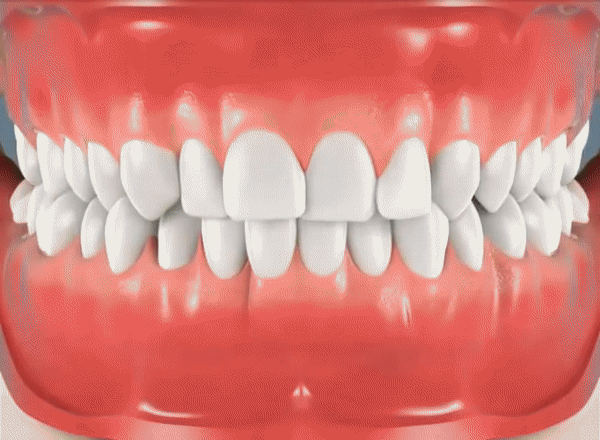
The relative ease at which your dentist or oral surgeon can extract your wisdom teeth depends on their position and stage of development. Your oral health care provider will be able to give you an idea of what to expect during your pre-extraction exam. A wisdom tooth that is fully erupted through the gum can be extracted as easily as any other tooth. However, a wisdom tooth that is underneath the gums and embedded in the jawbone will require an incision into the gums and then removal of the portion of bone that lies over the tooth. Often, for a tooth in this situation, the tooth will be extracted in small sections rather than removed in one piece to minimize the amount of bone that needs to be removed to get the tooth out.
